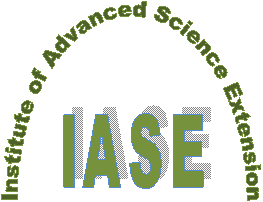International
ADVANCED AND APPLIED SCIENCES
EISSN: 2313-3724, Print ISSN:2313-626X
Frequency: 12
![]()
Volume 6, Issue 11 (November 2019), Pages: 42-54
----------------------------------------------
Original Research Paper
Title: Forecasting Vietnamese tourists’ accommodation demand using grey forecasting and ARIMA models
Author(s): Nhu-Ty Nguyen 1, Tuong-Thuy-Tran Nguyen 1, Thanh-Tuyen Tran 2, *
Affiliation(s):
1School of Business, International University – VNU-HCMC, Quarter 6, Linh Trung Ward, Thu Duc District, HCMC, Vietnam
2Scientific Research Center, Lac Hong University, No.10 Huynh Van Nghe Street, Dong Nai Provinec, Vietnam
* Corresponding Author.
 Corresponding author's ORCID profile: https://orcid.org/0000-0002-9900-8592
Corresponding author's ORCID profile: https://orcid.org/0000-0002-9900-8592
Digital Object Identifier:
https://doi.org/10.21833/ijaas.2019.11.007
Abstract:
The development of the tourist accommodation sector significantly contributes to the overall growth of tourism. The need for accurate predicting the demand for tourist accommodation of international and domestic tourists is a key goal for future good preparation and appropriate strategy. The objective of this study is to show some Grey forecasting models involving GM (1, 1), Verhulst, DGM (1,1), and ARIMA models consist of ARIMA (0, 1, 1) for the projection of the future number of domestic and international visitors serviced by tourist accommodation establishments in Lam Dong province. The author of this study applies four essential criteria Mean absolute percentage error (MAPE), Mean absolute deviation (MAD), Mean square error (MSE), Root mean square error (RMSE) to compare the various forecasting models outcomes and to examine which suitable forecasting models can improve the capability to project the number of future international and domestic tourists served by tourist accommodations in Lam Dong province. The monthly statistics of number tourists serviced of tourist accommodation and total revenue from tourist accommodation service in Lam Dong province covering in the period from January 2012 to October 2018 are obtained from the official website of general statistics office of Lam Dong province and statistical yearbook of Lam Dong in order to guarantee the accuracy of forecasting procedure. The key findings of this study are that ARIMA (1, 1, 1) (1, 1, 1) model can effectively predict the number of domestic tourists with more accurate outcomes with a minimum predicted errors. Besides that, the number of international visitors serviced by tourist accommodation can be obtained more accurately by using the ARIMA (1, 1, 1) (1, 1, 1) model. In the case of total revenue from tourist accommodation service in Lam Dong province, ARIMA (0, 1, 1) (0, 1, 1), GM (1, 1), DGM (1, 1) models have better performance than the Verhulst model. The forecasting results also showed the number of international and domestic tourists serviced by tourist accommodation in Lam Dong is growth slightly. Therefore, Lam Dong Authority must make good preparation and appropriate strategies to response exactly at any changes and supply for tourist accommodation markets.
© 2019 The Authors. Published by IASE.
This is an
Keywords: GM (1, 1), Verhulst, DGM (1, 1), ARIMA, Forecasting, Grey system
Article History: Received 28 November 2018, Received in revised form 29 August 2019, Accepted 3 September 2019
Acknowledgement:
No Acknowledgement.
Compliance with ethical standards
Conflict of interest: The authors declare that they have no conflict of interest.
Citation:
Nguyen NT, Nguyen TTT, and Tran TT (2019). Forecasting Vietnamese tourists’ accommodation demand using grey forecasting and ARIMA modelss. International Journal of Advanced and Applied Sciences, 6(11): 42-54
Figures
Fig. 1 Fig. 2 Fig. 3 Fig. 4 Fig. 5 Fig. 6 Fig. 7 Fig. 8
Tables
Table 1 Table 2 Table 3 Table 4 Table 5 Table 6 Table 7 Table 8
----------------------------------------------
References (16)
- Ampountolas A (2018). Forecasting hotel demand uncertainty using time series Bayesian VAR models. Tourism Economics, 25(5): 734-756. https://doi.org/10.1177/1354816618801741 [Google Scholar]
- Box GEP and Jenkins JM (1976). Time series analysis: Forecasting and control. Holden-Day, San Francisco, USA. [Google Scholar]
- Chu Y (2014). A review of studies on luxury hotels over the past two decades. Ph.D. Dissertation, Iowa State University, Ames, Iowa, USA. [Google Scholar]
- Julong D (1989). Introduction to grey system theory. The Journal of grey system, 1(1): 1-24. [Google Scholar]
- Lim C and Chan F (2009). Forecasting tourist accommodation demand in New Zealand. In the 18th World IMACS/MODSIM congress, Cairns, Australia: 13-17. [Google Scholar]
- Nguyen NT and Tran TT (2019). Optimizing mathematical parameters of Grey system theory: An empirical forecasting case of Vietnamese tourism. Neural Computing and Applications, 31: 1075–1089. https://doi.org/10.1007/s00521-017-3058-9 [Google Scholar]
- Poudel S (2013). The influence of the accommodation sector on tourism development and its sustainability: Case Study: Strand Camping, Larsmo. Degree Programme in Tourism Thesis, Centria University of Applied Sciences, Kokkola, Finland. [Google Scholar]
- Rajopadhye M, Ghalia MB, Wang PP, Baker T, and Eister CV (2001). Forecasting uncertain hotel room demand. Information Sciences, 132(1-4): 1-11. https://doi.org/10.1016/S0020-0255(00)00082-7 [Google Scholar]
- Schwartz Z (1999). Monitoring the accuracy of multiple occupancy forecasts. Hospitality Review, 17(1): 29-42. [Google Scholar]
- Song H and Li G (2008). Tourism demand modelling and forecasting: A review of recent research. Tourism Management, 29(2): 203-220. https://doi.org/10.1016/j.tourman.2007.07.016 [Google Scholar]
- Van Lohuizen A and Smith B (2017). Projections of demand and supply for visitor accommodation in London to 2050. Working Paper 88, Greater London Authority, London, UK. [Google Scholar]
- Wang ZX, Dang YG, and Liu SF (2009). Unbiased grey Verhulst model and its application. Systems Engineering-Theory and Practice, 29(10): 138-144. https://doi.org/10.1016/S1874-8651(10)60078-6 [Google Scholar]
- Weatherford LR and Kimes SE (2003). A comparison of forecasting methods for hotel revenue management. International Journal of Forecasting, 19(3): 401-415. https://doi.org/10.1016/S0169-2070(02)00011-0 [Google Scholar]
- Wu DC, Song H, and Shen S (2017). New developments in tourism and hotel demand modeling and forecasting. International Journal of Contemporary Hospitality Management, 29(1): 507-529. https://doi.org/10.1108/IJCHM-05-2015-0249 [Google Scholar]
- Wu YY (2010). Stock index prediction based on Grey theory, ARIMA model and Wavelet method. Ph.D. Dissertation, Concordia University, Montreal, Canada. [Google Scholar]
- Yüksel S (2007). An integrated forecasting approach to hotel demand. Mathematical and Computer Modelling, 46(7-8): 1063-1070. https://doi.org/10.1016/j.mcm.2007.03.008 [Google Scholar]

